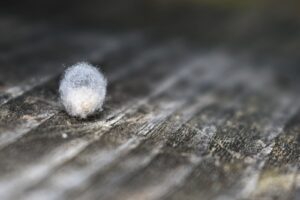Home / Blog / Spiders / What Are Joro Spiders and Are They Dangerous?
What Are Joro Spiders and Are They Dangerous?

Scientifically reviewed by Daniel Baldwin, BCE, CCFS, CP-FS
-Published on December 30, 2022
-Updated on July 13, 2023
Several years ago, the Joro spider made a rather spectacular appearance in the southeastern United States. Since then, this invasive species has spread up the East coast. However, the diet of a Joro spider can act as natural pest control for farms and crops in the places it has settled.
Learn more about the Joro spider, where it came from, what it looks like, and if it’s dangerous to come into contact with one.
What are Joro spiders?
The Joro spider, from what we can tell, is named after a spider demon in Japanese culture. While this may seem intimidating, its name is mainly derived from its black and yellow coloring and not because it is dangerous or demonic in nature.
What do Joro spiders look like?
Female Joro spiders have a stunning black-and-yellow physique. Their head, abdomen, and long, slender legs are bright yellow banded with dark gray-blue stripes (which can look black, at times).
Growing to the diminutive size of just under 1 inch long with a leg span up to 4 inches (for females), the Joro spider looks much more imposing in photos than it is in real life.
Male Joro spiders are much smaller than females, with a body length of only 0.3 inches. They are brown in color but don’t share the bold markings of their female counterparts.
Where are Joro spiders in the U.S.?
The Joro spider comes from Asia, primarily Japan, North and South Korea, China, Taiwan, Vietnam, and India. They were probably introduced via shipping containers or planting soil.
This spider species arrived in the U.S. in 2013 and was first seen in Georgia. Due to the Joro spider’s invasive nature, the species has moved up the East Coast and can now be found in several states.
Because they come from warm, humid climates, the Joro does prefer a warmer and more humid ecosystem. This is likely why we haven’t seen the Joro move across the midwestern United States.
What do Joro spiders eat?
While it is often said that invasive species are bad for the native populations in the area, the Joro spider primarily eats stink bugs, lantern flies, and lady beetles, which are common farm pests, destroying and damaging crops in agricultural areas.
That being said, this species of spider is carnivorous and will eat its way through nearly any insect that it comes across. This means that both pests and insects with positive environmental impacts will fall prey to the Joro. In part, this is what makes the U.S. Joro spider infestation particularly concerning.
Female Joro spiders can spin webs up to 10 feet long to catch insects to eat and to lay eggs. Male Joros do not spin webs.
How long do Joro spiders live?
Joro spiders live on average for one year, giving them enough time to travel and mate. With a gestation period of 2–4 months, female Joro spiders can potentially produce 500–1500 spiderlings within their year-long lifespan.
Are Joro spiders dangerous?
Joro spiders are not dangerous to humans or animals. They rarely bite, and, if they do, they have very weak venom that produces little reaction. Instead, they pose threats to the insects that are native to the regions they invade. Due to the large numbers they produce and their predilection for feasting on many types of insects, the Joro presents a significant challenge to the survival of native insect populations.
How do you get rid of Joro spiders?
Joro spiders are predisposed to live outside, where other insects are plentiful for hunting. Chances are if you encounter a Joro inside your home, it’s because they have determined that there is a food source, like an insect infestation, there. If you live in one of the areas that is affected by the Joro spider invasion, you’re more likely to see them in your yard and other natural areas.
The best way to deter the Joro spider from entering your yard is to clear away areas that harbor insects that would draw the Joro in to feed upon. Keeping your yard free of piles of leaves, deadfall, and wood piles will do wonders to keep this black and yellow spider from calling your yard home.
Because Joro spiders are new to the U.S., there aren’t many professional methods to control them yet. Pesticides are also not recommended. If you’re seeing a lot of Joro spiders in or around your home and are having trouble reducing other insect populations, including spiders, that they may be feeding on, it could be best to call a professional pest control service. They can help you locate nests and potential shelters around your yard or inside your home that attracts them. Once you’ve removed these insect infestations, the Joro spider can follow suit and leave your home alone.
Related Articles
Visit our blog to learn more.
→






